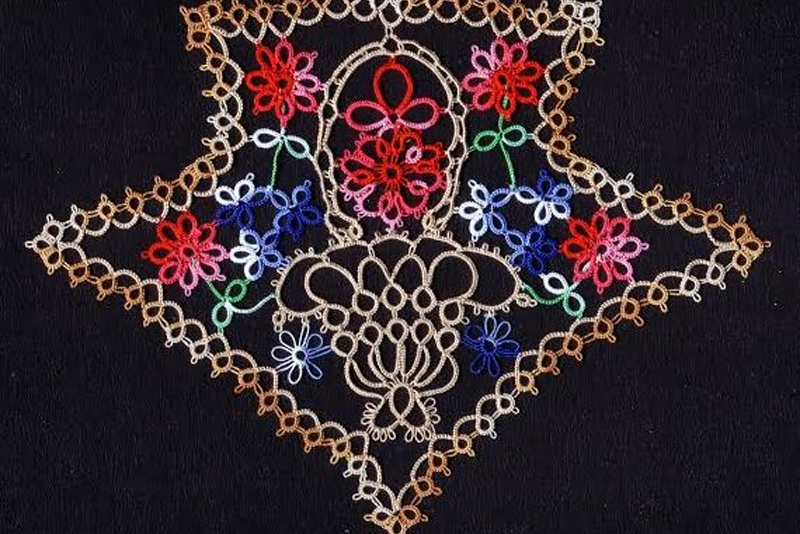Last week's discussion focused on picots that were sewn together in an unusual manner.

But the truest example of "sewn" picots is best shown by this antique sample.

This is a good reminder that when we start to tat we need to start at the end by considering how to finish off the tails of the thread.
The simplest tatting is usually a ring or small motif repeatedly endlessly for an edging. If this edging is composed of only rings then one shuttle is required. A double-sided edging of rings also needs but one shuttle. If the pattern, however, has both rings and chains then both a ball thread and one or more shuttle threads are necessary. If using one shuttle and the ball, wind one or two extra shuttles before starting to tat. This will allow you to add on more thread as the initial shuttles empties without cutting the ball thread.
In many antique patterns there will be instructions directing the tatter to wind a shuttle and cut the thread. Then the tatter is directed to "tie the ends together" to start tatting. Do not cut the ball thread unless absolutely necessary.
Why worry about cutting the ball thread? Because it creates ends or tails which must be hidden in the work. Tatters do not like ends, so methods of avoiding extra ends to hide have developed.
If you are tatting a pattern where the last ring joins back to the first ring made, then plan ahead by preparing the initial ring to hide the ends by means of helping loops. These loops may be a thread that is smaller than that being tatted or, use a monofilament thread, such as invisible sewing thread or fishing line. Use two pieces each about 6" in length. Fold in half and tape ends together. The loops will be inserted into the tatting so that one loop hangs down on each side of the ring with the loop at the bottom and the ends toward the center of the ring. Overtat the helping loops. At about the midpoint of the ring switch to the second helping loop.
Close ring very carefully and secure the hanging loops with tape or clamps so that they will not come out of place while you tat the length required. When finished attach the last chain to base of the initial ring. Cut leaving 6" tails. Insert one tail into each hanging loop and gently pull the loop and tail into the ring. Completely pull thru and trim closely allowing the end to recede into the tatting. Be very careful when cutting.

The best way to hide your thread ends is to avoid them whenever possible. This means that you should begin to "think" the pattern through before you tat it. Thinking ahead allows you to employ two shuttles to both add to the design by "throwing off" rings, to wind your shuttles in the continuous thread method (CTM) by winding the first shuttle and then rolling off enough thread to wind the second shuttle from the opposite end, and to utilize the split ring, split chain, and mock picot to climb out of rounds.


Here's the latest article from the Tatting site at BellaOnline.com.
Sewn Picot in outwest vintage doily Found out west, an ecru rectangular doily with a puzzling joining.
http://www.bellaonline.com/articles/art306221.asp
Please visit tatting.bellaonline.com for even more great content about Tatting.
To participate in free, fun online discussions, this site has a community forum all about Tatting located here -
http://forums.bellaonline.com/ubbthreads.php?ubb=postlist&Board=39
I hope to hear from you sometime soon, either in the forum or in response to this email message. I thrive on your feedback!
Have fun passing this message along to family and friends, because we all love free knowledge!
Georgia Seitz, Tatting Editor http://tatting.bellaonline.com
One of the hundreds of sites at BellaOnline.com







